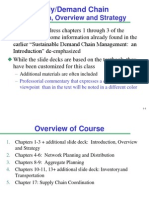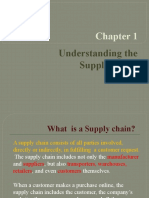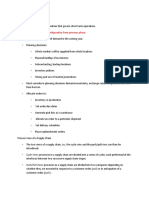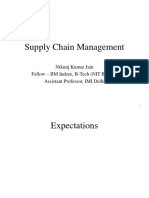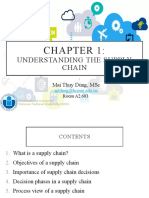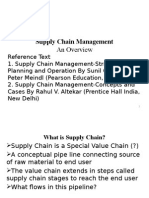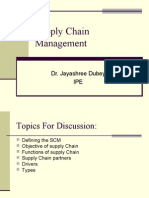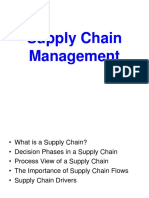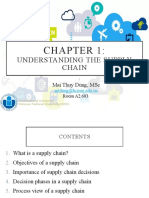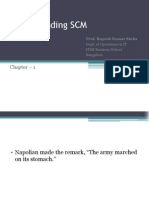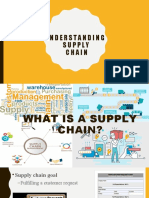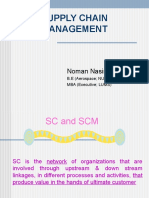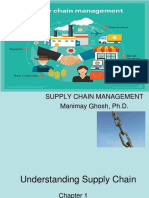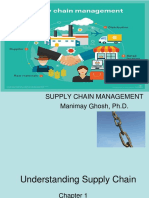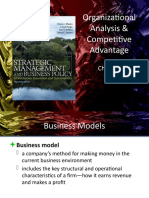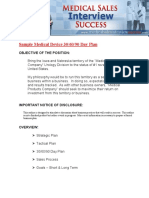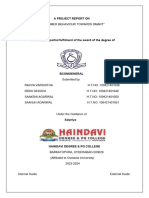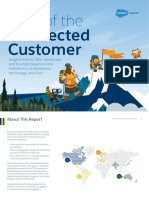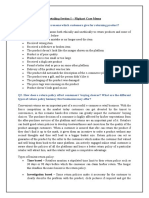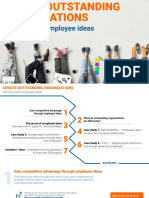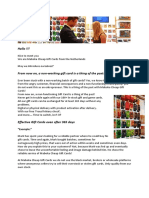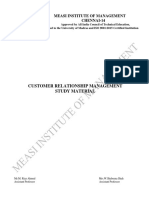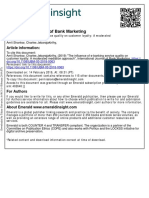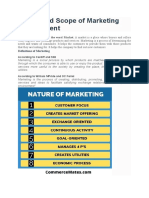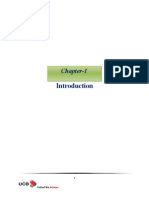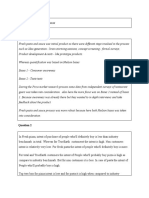0% found this document useful (0 votes)
1K views56 pagesSCM Module 1 Introduction
This document provides an overview of key concepts in supply chain management. It discusses the objectives, importance, decision phases, process views, competitive strategies, and drivers of effective supply chain management. It also examines specific supply chain examples from companies like Walmart, Dell, and Quaker Oats to illustrate principles of supply chain design, planning, and operations. The overall goal of supply chain management is to maximize total supply chain profitability through the effective management of product, information, and funds flows across all stages from suppliers to customers.
Uploaded by
Chandrashekhar GadiyappanavarCopyright
© Attribution Non-Commercial (BY-NC)
We take content rights seriously. If you suspect this is your content, claim it here.
Available Formats
Download as PPT, PDF, TXT or read online on Scribd
0% found this document useful (0 votes)
1K views56 pagesSCM Module 1 Introduction
This document provides an overview of key concepts in supply chain management. It discusses the objectives, importance, decision phases, process views, competitive strategies, and drivers of effective supply chain management. It also examines specific supply chain examples from companies like Walmart, Dell, and Quaker Oats to illustrate principles of supply chain design, planning, and operations. The overall goal of supply chain management is to maximize total supply chain profitability through the effective management of product, information, and funds flows across all stages from suppliers to customers.
Uploaded by
Chandrashekhar GadiyappanavarCopyright
© Attribution Non-Commercial (BY-NC)
We take content rights seriously. If you suspect this is your content, claim it here.
Available Formats
Download as PPT, PDF, TXT or read online on Scribd
/ 56


